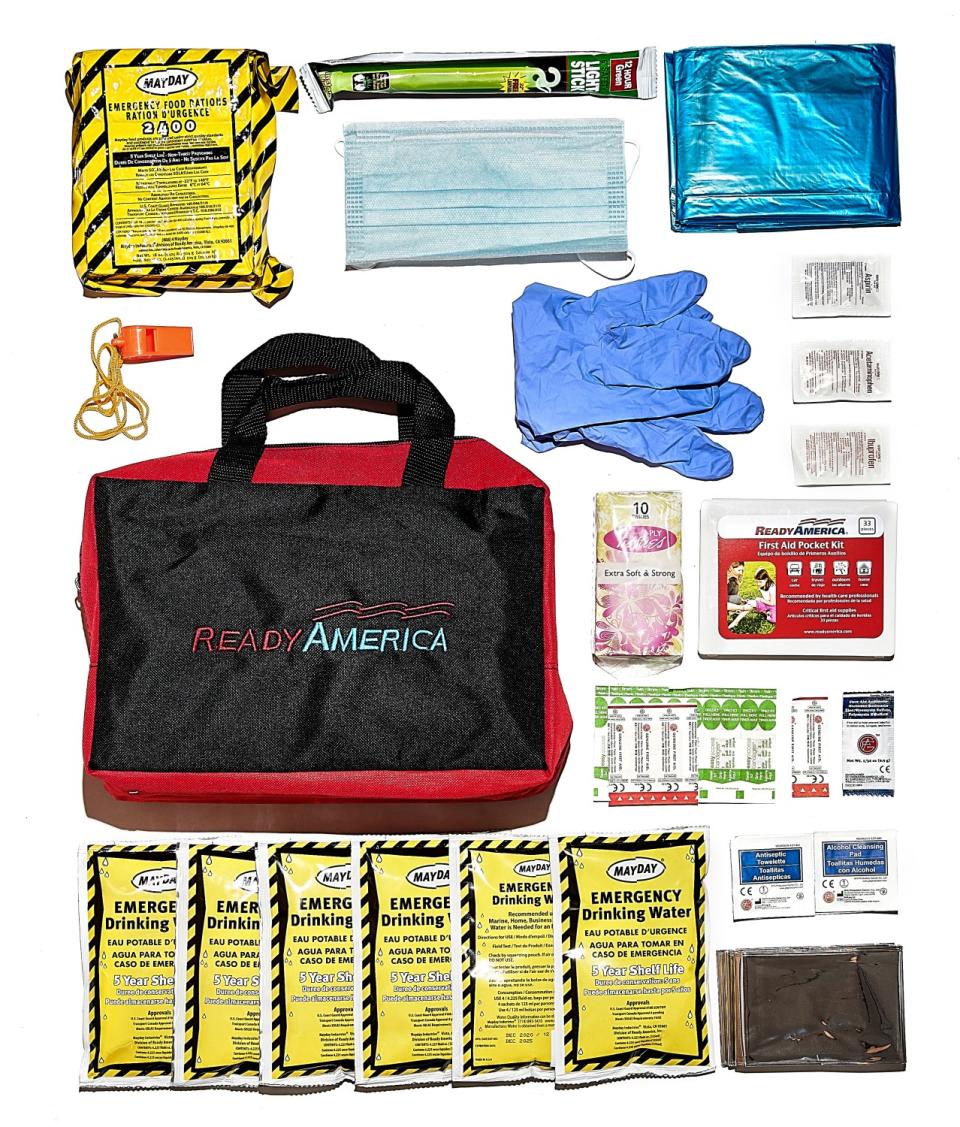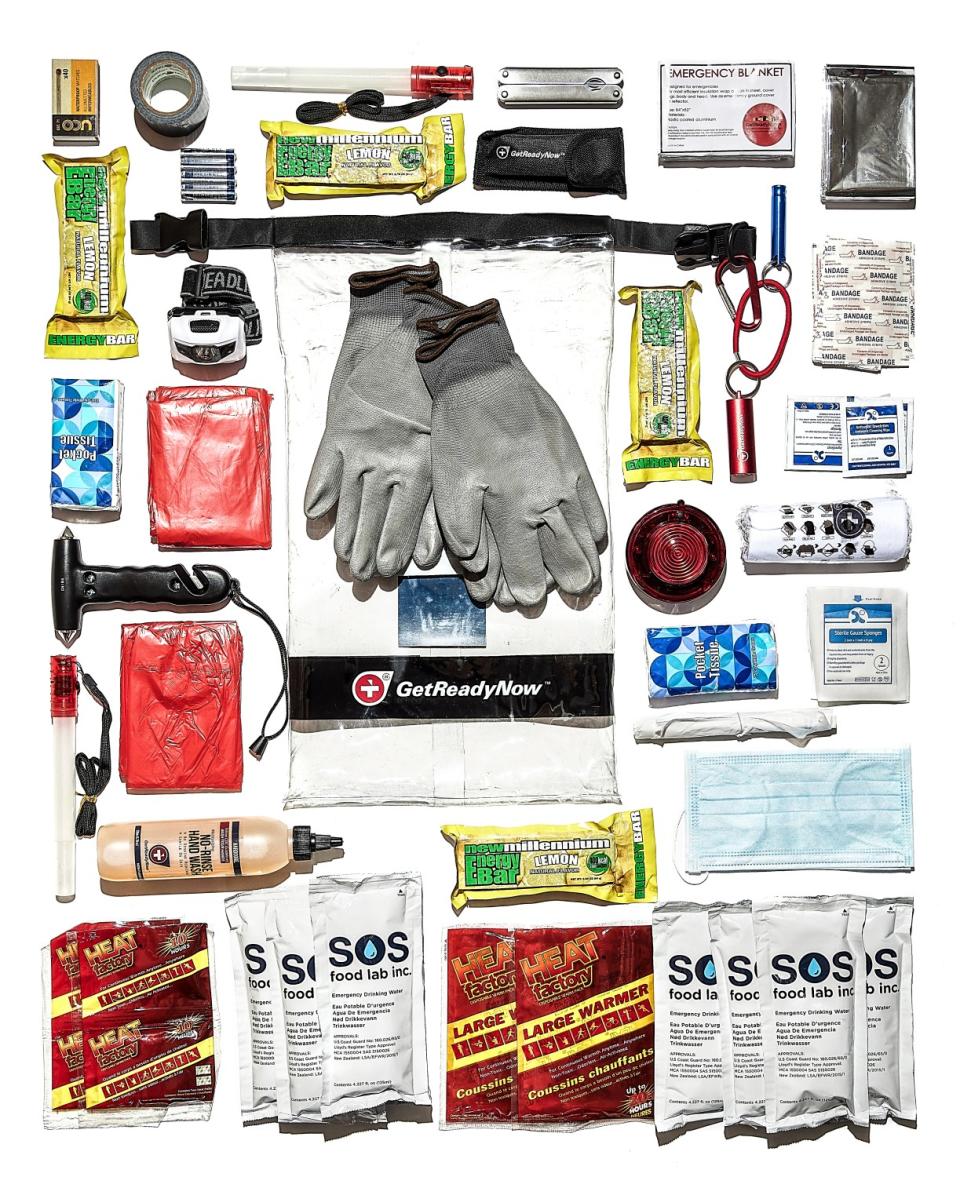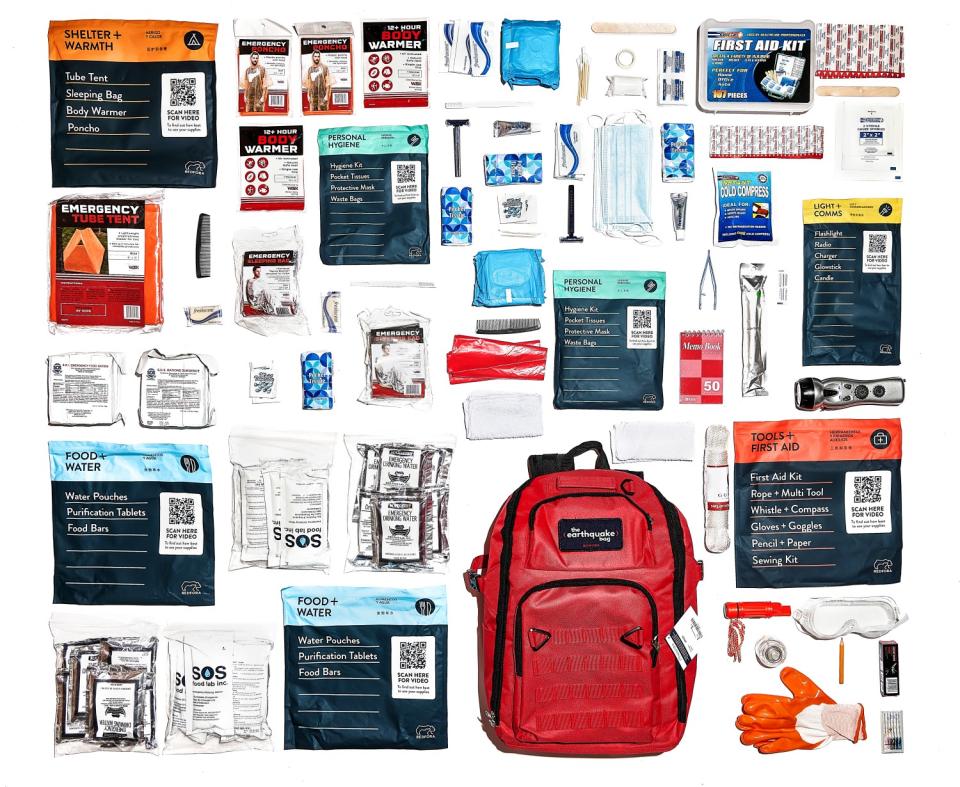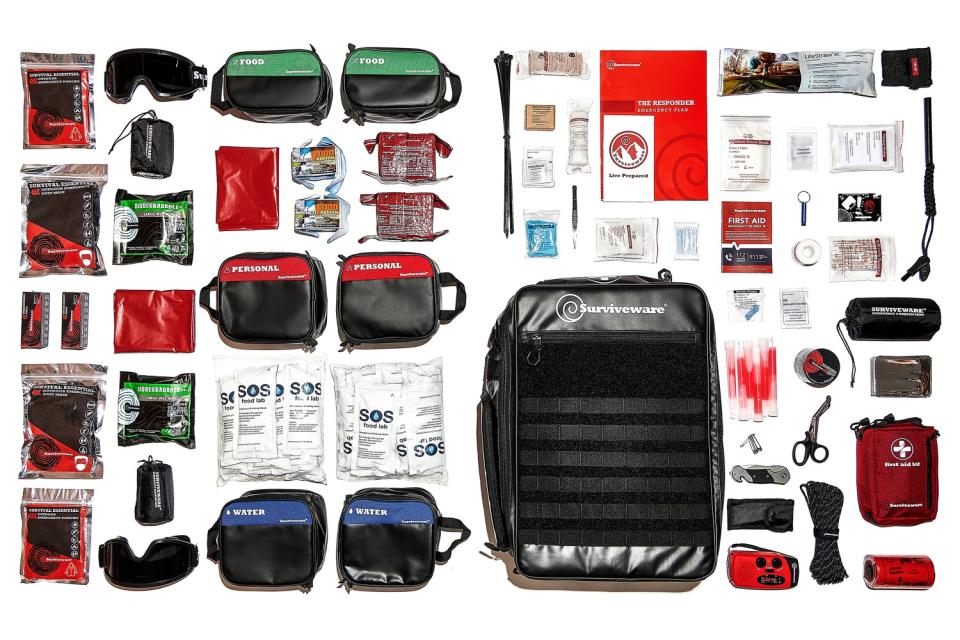We unboxed 4 premade earthquake kits, from $30 to $300
If you purchase the kits linked to on our site, The Times may earn a commission.
Everyone needs an earthquake kit. When the big one hits, you’ll need basic supplies, food and water to last you at least a couple of days until help arrives. There are a plethora of kits online at different price points. Some are designed for one person, others for a couple or a family. Consider who you’re buying for (do you anticipate you'll be alone or with your family?) and whether your kit will be stored at home, in your car or in a backpack.
The bricks of food included in many of the kits do have a multiyear shelf life, but they are designed for emergencies. You’ll definitely want to add a variety of other goods to keep you sane.
The following is an assessment of four kits. Treat them as starting points on your journey to full earthquake preparedness. To find an exhaustive list of what you’ll need in an emergency, visit ready.gov/earthquakes. There's also a sample list below.
Ready America 70080 72 Hour Emergency Kit: $27

This compact kit will easily fit in your car, backpack or tote bag. It comes with six 4.2-ounce water pouches and a 2,400-calorie food bar you can break apart and ration. The bar tastes a bit as though a stale Pop-Tart and a stale shortbread cookie had a food baby, with a little bit of artificial sweetener sprinkled in. You will not love it, but it will keep you going.
Note that water sitting in plastic pouches tastes like plastic, but it’s drinkable. The general rule is to have at least 1 gallon of water per day per person for at least three days. If you’re in a warmer climate such as Southern California, you’ll want more.
This kit also includes a whistle, a first aid kit, a light stick, tissues, a dust mask, a rain poncho, gloves and a survival blanket.
Out of the four kits we opened, this was the only one that included any form of medicine. It has acetaminophen, aspirin, ibuprofen and Neosporin. If you need the basics (you’re buying this kit for the bare minimum supplies and its portability), this will do.
GetReadyNow Zombie Survival Kit: $80

Turns out, what you’ll need to survive a zombie apocalypse is not all that different from what you might require after a big earthquake. Unlike most other kits, this one doesn’t specify how many people it’s for. We found there were enough survival supplies for two, but the food would last only one person for a couple of days.
All the items are packed in a clear bag, so you can easily see what’s inside. (This could work against you if you’re running from a horde of zombies in need of, say, your clearly visible duct tape, in addition to your virus-free blood.)
The kit comes with ample light supplies: headlamp, glow sticks, wristband with LED light and waterproof matches. (We tested the matches, and they are indeed waterproof.)
There’s a Mylar blanket, a rain poncho, a bandanna and decent utility gloves, as well as a first-aid kit, duct tape, batteries, rinse-free hand wash, trash bags and tissue.
The variety of supplies included is good for the price point. Chances are, if you were to buy the headlamp, multitool and handwarmers separately, you’d spend more than $80. The kit includes four lemon Millennium Energy bars (400 calories each). They had that same stale shortbread cookie consistency but tasted like lemon dish soap. Pro tip: Many of these energy bar companies sell multiple flavors of bars. Buy the type you want separately and maybe skip the lemon (or feed them to the zombies).
Redfora Earthquake Bag: $155

The overarching theme with earthquake kits is this: The more money you spend, the more stuff you get. But not all of it is useful. This kit is efficiently packaged with a backpack and clearly labeled bags of supplies. In addition to two dozen 4.2-ounce water pouches and two 3,600-calorie food bars, you also get 20 water purification tablets and a hydration bag with a straw. The tablets purify water but make it taste and smell like chlorine.
There’s a “tent” and Mylar blankets. The tent is a tube of thin material you fasten down at the corners and hold up by tying a rope to two trees or tree-stand-ins. It doesn’t hold its shape, but it does offer some shelter.
The first-aid kit, five-in-one whistle, multifunction tool, safety goggles and work gloves were all of pretty good quality and sufficient.
In the especially useful category, there’s a hygiene kit with a comb, razor, toothbrush, toothpaste, shampoo, conditioner, deodorant gel, a tiny bar of soap and menstrual pads. These are things you might not think of in an emergency, but they’ll help you feel a little more normal. Also useful is the crank radio that doubles as a flashlight and charged my cellphone.
Some of the more unexpected items include a notepad, pencil and sewing kit. The number of adhesive bandages (more than 20) seemed excessive. Overall, this is a more than adequate pack for the price; like with many of the kits, it could benefit from additional water and food items.
Surviveware 72 Hour Survival Backpack for 2 People: $300

This is the deluxe version of a prepackaged earthquake kit. Not only are there two 3,600-calorie food bars, they are “U.S. Coast Guard approved.” Same with the water pouches. The “cinnamon flavored” bars had us humming the classic Big Red gum commercial song. If you have a choice, don’t choose the cinnamon flavor; it has that same stale shortbread taste as other bars with a hint of fake cinnamon. We couldn’t discern any real difference between these bars and the ones not approved by the U.S. Coast Guard — although these came with a higher price tag.
The kit features a square backpack with a Velcro grid along the exterior that you can use to attach the smaller Velcro pouches inside. Along with looking cool, the GridNet system of straps on the inside was useful in organizing smaller items and holding tools in place. There is a tool or product to prepare you for almost any situation. The knife was sturdier and of better quality than the multitool knife in the other kits. There was also a tent, paracord, duct tape, cable ties, splint and LifeStraw you can use to simultaneously purify and drink water.
The Ferro Rod fire starter succeeded at sparking, and there were matches as well. Like the Redfora kit, the backpack provided a crank radio that also charged my cellphone. The first-aid kit was the most extensive, with clearly labeled compartments for wound closure supplies and cleaning wipes, shears, tweezers, safety pins, adhesive dressing and tape. It also comes with a CPR kit complete with a resuscitation mask.
While the kit was thoughtful and well stocked, we did wonder if we could put something similar together for less.
This story originally appeared in Los Angeles Times.

